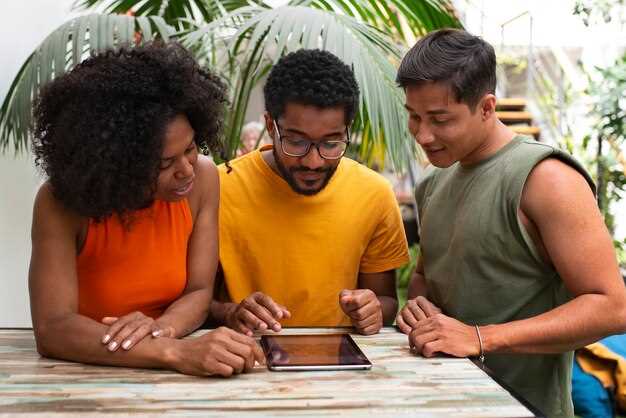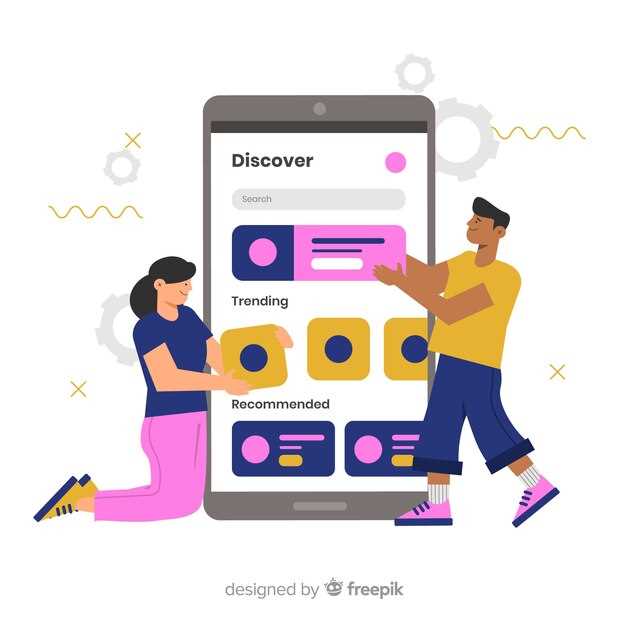Investing in a mobile app tailored for the travel sector significantly enhances customer experience and streamlines operations. Prioritize user-friendly interfaces, as studies show that a well-designed app can boost user engagement by up to 80%. Ensure the app includes features like booking management, itinerary customization, and real-time notifications. These elements not only improve user satisfaction but also encourage repeat usage.
Incorporate robust integration with popular travel APIs that provide access to flight data, accommodation options, and local attractions. This integration helps centralize travel information, simplifying the planning process for users. Leverage analytical tools to track user behavior and preferences; this data aids in personalizing the app and targeting marketing strategies more effectively.
Prioritize offline functionality, allowing users to access crucial travel information without internet connectivity. This feature is particularly beneficial for international travelers who may face connectivity issues. Additionally, consider incorporating a loyalty program within the app, rewarding users for bookings made through your platform. Such initiatives can elevate user engagement and retention rates.
Finally, ensure your app meets security standards to protect user data. Implementing secure payment gateways and obtaining necessary certifications will build trust and brand loyalty among users. Combine these strategies to create an impactful mobile app that stands out in the competitive travel industry.
Key Features of Hotel Apps for Enhanced Guest Experience

Focus on personalized experiences through customizable preferences within the app. Allow guests to select their room preferences, such as bed type or room location, ensuring a tailored stay.
- Mobile Check-In and Check-Out: Streamline the arrival and departure process by enabling guests to check in and out via their smartphones. This feature minimizes wait times at the front desk.
- Room Service and Amenities Ordering: Implement an intuitive interface for guests to order food, drinks, or spa services directly from their devices. Include real-time updates on order status.
- Local Recommendations: Provide curated lists of nearby attractions, restaurants, and activities based on guest interests. Include user reviews and instant booking options for convenience.
- Interactive Maps: Integrate maps that guide guests through the hotel’s facilities and surrounding area. Highlight amenities like pools, gyms, and dining options for easy navigation.
- Push Notifications: Send timely alerts about special promotions, events, or reminders for scheduled activities. Keep guests informed and engaged throughout their stay.
- Loyalty Programs: Incorporate a loyalty system that rewards guests for their visits and allows them to track points and rewards directly in the app.
- Feedback and Support: Encourage guests to provide feedback on their stay. Make a contact feature easy to find for any inquiries or assistance, ensuring responsive communication.
Implementing these features will significantly enhance the guest experience and foster loyalty, making your hotel stand out in a competitive market.
Integrating Virtual Tours in Flight Apps for Better User Engagement
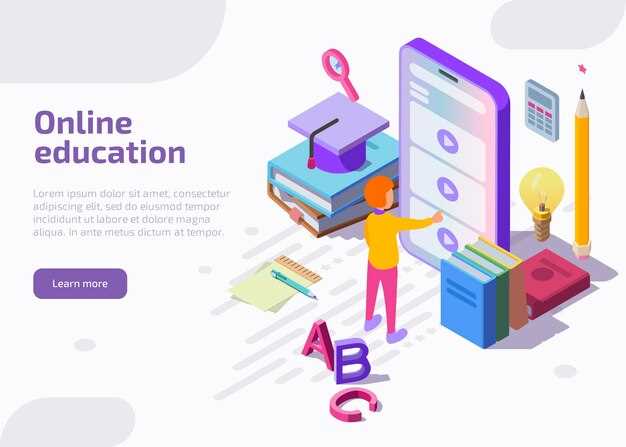
Incorporate 360-degree virtual tours into flight apps to enhance user experience. This interactive feature lets users explore aircraft interiors before their flight, increasing comfort and familiarity. Begin with high-quality images or videos of seats, amenities, and cabin layouts to give passengers a realistic feel.
Boost User Interaction with Rich Content
Offer clickable hotspots in the virtual tour. By doing this, users can gather specific information about seat classes, onboard services, and entertainment options. This interactivity not only helps users make better-informed choices but also encourages longer app sessions, which improves overall engagement levels.
Personalized Recommendations
Utilize the data from user preferences to customize virtual tour experiences. If a user often opts for extra legroom, highlight those seats during the tour. By aligning content with individual interests, you can create a stronger connection with each user, raising the likelihood of repeat usage.
Incorporate social sharing options, enabling users to share their virtual tour experiences on social media platforms. This not only promotes your app but also allows for authentic user-generated content, attracting more potential users. Use regular updates to refresh the virtual content, keeping it relevant and exciting for returning users.
By integrating virtual tours thoughtfully, you create an engaging environment that resonates with passengers, fostering a sense of control and satisfaction during their travel planning. This approach will likely enhance user retention and improve overall app ratings.
Booking Apps: Streamlining the Reservation Process for Users
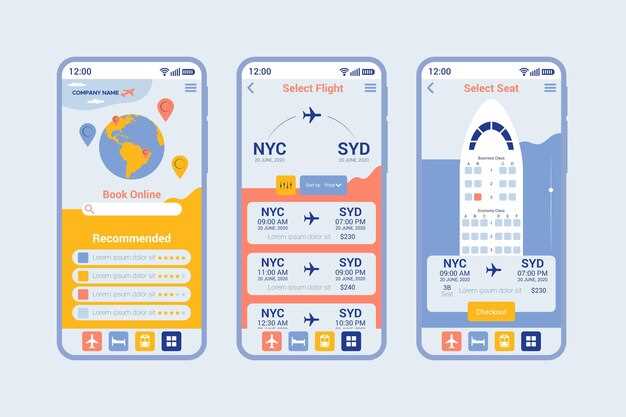
Implement user-friendly interfaces in booking apps. An intuitive design allows customers to effortlessly search and filter options, making the reservation process seamless. Include straightforward navigation features to enhance user experience and reduce abandonment rates.
Real-time Availability and Pricing
Integrate real-time updates for availability and pricing. Users appreciate transparency, so displaying live data helps them make informed decisions quickly. Consider utilizing APIs to pull in information directly from service providers, allowing users to book instantly without waiting for confirmation.
Personalized Recommendations
Leverage user data to offer tailored suggestions. By analyzing past bookings and preferences, booking apps can present users with options that appeal specifically to them. This personalization enhances satisfaction and can lead to increased bookings.
Include multiple payment options, such as credit cards, PayPal, and digital wallets. Offering flexibility in payment methods caters to diverse user preferences, reducing friction during the checkout phase. Ensure a secure payment process to build user trust and encourage repeat visits.
Lastly, gather and display user reviews and ratings. Encouraging feedback can build a community around your app. New users often rely on past experiences when making decisions. By highlighting positive reviews, you increase the likelihood of a booking and establish reliability in your app.
Utilizing AI Chatbots in Tourism Apps for Instant Support
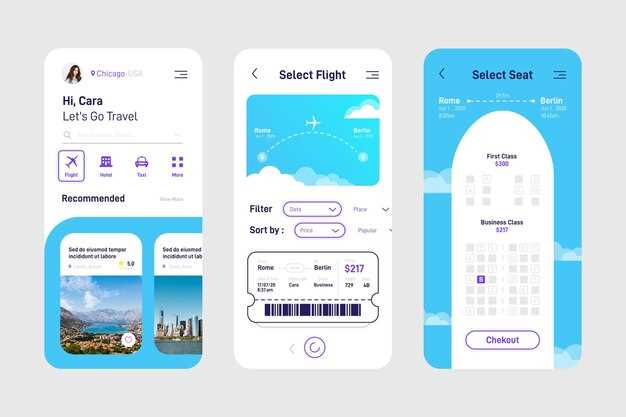
Integrate AI chatbots into your tourism app to offer users immediate assistance, enhancing their travel experience. These chatbots can handle a range of tasks such as answering FAQs, providing destination information, and assisting with bookings.
Key Features to Implement
Focus on several essential features to ensure your chatbot is user-friendly and beneficial:
| Feature | Description |
|---|---|
| 24/7 Availability | Provide constant support, accommodating travelers in different time zones. |
| Multi-language Support | Enhance accessibility for international travelers by offering language options. |
| Personalized Recommendations | Utilize user data to suggest tailored activities and itineraries based on preferences. |
| Crisis Management | Equip chatbots to offer solutions during unexpected issues like flight cancellations or emergencies. |
Benefits of AI Chatbots in Tourism
Implementing AI chatbots leads to significant advantages for both businesses and travelers. They reduce response times, allowing users to access information swiftly. This efficiency not only improves user satisfaction but also increases conversion rates for bookings. Additionally, chatbots gather user data, enabling businesses to refine their offerings and marketing strategies.
Integrate these solutions strategically to create a seamless experience for your users, ensuring your tourism app stands out in a competitive market.
Customizing Travel Apps for Different Demographics and Preferences
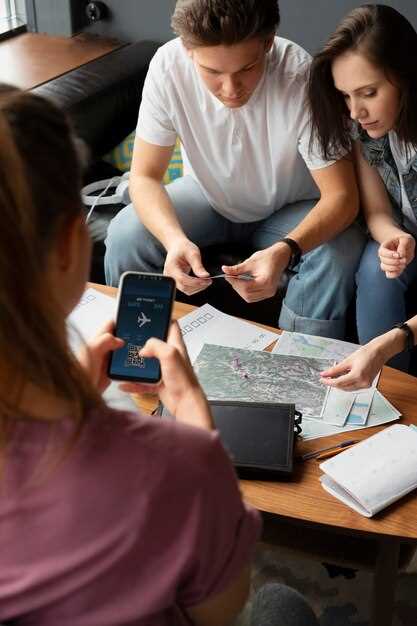
Identify the target demographic and tailor your app’s features accordingly. For example, young travelers often seek budget-friendly options and social sharing capabilities. Incorporate user-generated content and group booking features to appeal to this audience.
- Families: Prioritize safety features, family-friendly activities, and suggestions for kid-friendly accommodations. Include filters for amenities like cribs and playgrounds.
- Business Travelers: Offer features like itinerary management, expense tracking, and integration with calendar apps. Ensure easy accessibility to conference information and airport lounges.
- Seniors: Simplify navigation with larger fonts and straightforward layouts. Provide detailed information about accessibility options at various destinations.
Integrate personalized recommendations based on user preferences. Use data analytics to understand users’ past trips and suggest relevant activities, dining options, and attractions. Implement a feedback loop to refine offerings based on user input.
- Interests: Allow users to select interests such as adventure, relaxation, or culture, and curate recommendations accordingly.
- Seasonal Preferences: Tailor content based on the travel season, highlighting seasonal events, festivals, and activities.
Utilize location-based services to enhance user experience. Provide real-time updates on local events or deals that match user interests. Consider incorporating augmented reality features to help users explore nearby attractions interactively.
Incorporate social aspects to enhance community engagement. Enable users to share their experiences, tips, and itineraries with friends or fellow travelers. Facilitate discussions through forums or chat features to build a vibrant community.
Regularly collect and analyze user data to adjust features and ensure they meet the evolving needs of your audience. Stay informed about demographic trends and travel preferences to keep your app relevant and user-friendly.
Monetization Strategies for Travel Apps: In-app Purchases and Subscriptions
Integrate in-app purchases to enhance the user experience while generating revenue. Offer premium features such as offline maps, exclusive travel guides, or personalized itineraries. Users appreciate immediate access to valuable content, especially on-the-go, leading to higher conversion rates.
Implement a tiered subscription model. Basic features can be free, while premium tiers offer advanced functionalities, such as ad-free experiences, priority support, or discounted services. Encourage users to opt for subscriptions by highlighting the savings and added benefits they receive over time.
Introduce trial periods for subscriptions to attract hesitant users. Allow them to explore premium features before committing. This approach builds trust and demonstrates the app’s value, increasing the likelihood of subscription renewal.
Bundle services with partnerships. Collaborate with hotels, airlines, or tour operators to create package deals that users can purchase within the app. This strategy not only adds convenience for users but also opens up multiple revenue streams.
Leverage seasonal promotions or discounts to stimulate purchases during peak travel times. Highlight limited-time offers within the app to create urgency and encourage users to make purchases they might otherwise postpone.
Analyze user behavior to refine offerings. Use analytics to track which features users engage with the most and tailor in-app purchases accordingly. Understanding preferences allows for targeted marketing efforts, increasing the likelihood of conversions.
Enhance user engagement with exclusive content through in-app purchases. This could include insider tips, early access to new destinations, or members-only travel experiences. Creating a sense of exclusivity can drive more users to spend.
Encourage user feedback to identify additional monetization opportunities. Listening to customers provides insights into potential features they would be willing to pay for, ensuring that your monetization strategies stay relevant and appealing.
Data Privacy and Security in Hotel and Booking Apps
Implement strong encryption methods to protect user data during transmission and storage. Use SSL/TLS protocols to safeguard personal information exchanged between users and servers. Regularly update your application to patch any vulnerabilities.
Ensure that users have clear access to privacy policies defining what data is collected, how it’s used, and with whom it’s shared. Transparency builds trust and empowers users to make informed decisions about their personal information.
Data Minimization Practices
Adopt a data minimization strategy. Collect only the information necessary for functionality, such as payment details and booking records. This approach reduces the risk of data breaches, as less sensitive data is stored.
| Data Type | Recommendation |
|---|---|
| Personal Identifiable Information (PII) | Limit collection; use anonymization techniques. |
| Payment Information | Store securely with industry-standard encryption. |
| User Behavior Data | Obtain user consent and provide clear opt-out options. |
User Education and Awareness
Educate users about security best practices, such as creating strong passwords and recognizing phishing attempts. Providing in-app tips reinforces safe usage and enhances user confidence in your application.
Implement two-factor authentication (2FA) to add an extra layer of security for user accounts. This measure significantly decreases the likelihood of unauthorized access.
Regularly conduct security audits to identify and rectify vulnerabilities. These audits help maintain your app’s integrity and ensure compliance with data protection regulations.
Leveraging User Reviews and Ratings in Travel App Development
Integrate user reviews and ratings directly into your app’s interface to build trust and encourage engagement. Displaying real-time feedback not only enhances credibility but also provides users with valuable insights about destinations, services, or accommodations. Design your app to feature prominently displayed reviews, allowing users to quickly gauge the quality of offerings.
Incorporate a simplified rating system that enables users to express their opinions easily. A five-star scale or thumbs-up/down approach facilitates quick assessments. Highlight the most helpful reviews and display them at the top. This encourages users to leave thoughtful feedback, knowing it could benefit others.
Utilize sentiment analysis tools to aggregate and analyze reviews. This allows developers to identify strengths and weaknesses within the app or service. Understanding common themes in user feedback helps inform feature updates and refine customer experiences. Implementing changes based on user suggestions leads to higher satisfaction rates.
Encourage users to leave their reviews by offering incentives such as discounts on future bookings or loyalty points. This not only boosts participation but also increases the volume of valuable user-generated content your app can showcase.
Monitor reviews for trends or patterns over time. Regularly assess user ratings to gauge satisfaction or identify areas needing improvement. Establishing a feedback loop will demonstrate to users that their opinions matter, fostering a loyal community around your travel app.
Lastly, ensure transparency in displaying reviews, even negative ones. Authenticity resonates with users, fostering trust. Consider adding a response feature where users can reply to reviews, fostering discussion and community engagement around specific travel experiences.
Integrating Payment Gateways in Flight and Hotel Apps
Implement a user-friendly payment gateway to enhance the booking experience in flight and hotel applications. Choose providers that support multiple payment methods, such as credit cards, e-wallets, and bank transfers. This flexibility caters to diverse user preferences.
Key Steps for Integration
- Select the Right Payment Gateway: Research gateways like Stripe, PayPal, and Braintree. Compare transaction fees, security features, and ease of integration.
- Ensure Security Compliance: Implement PCI DSS compliance to safeguard customer payment data. Utilize encryption and tokenization to protect sensitive information.
- Streamline the User Experience: Simplify the checkout process. Limit the number of steps needed to complete a payment and support save payment options for returning customers.
- Test Thoroughly: Conduct rigorous testing in various scenarios. Ensure all payment methods function correctly and handle error cases smoothly.
- Optimize for Mobile: Design an interface that is easy to navigate on mobile devices. Consider implementing autofill options for faster checkouts.
Additional Recommendations
- Multi-Currency Support: Enable users to pay in their local currency. This reduces confusion and potential conversion fees, enhancing customer satisfaction.
- Provide Clear Refund Policies: Clearly outline refund procedures. Transparency builds trust and reduces disputes.
- Incorporate Analytics: Use analytics tools to monitor payment trends and user behavior. Adjust your payment strategies based on this data to improve conversion rates.
By focusing on these strategies, you increase the likelihood of successful transactions and boost user engagement in your travel apps. Make payment processing seamless to encourage more bookings and enhance user loyalty.
Building Geolocation Features for Enhanced Traveler Experience
Incorporate real-time geolocation tracking in your travel app to guide users seamlessly through their adventures. Implementing GPS functionalities allows travelers to access maps and directions instantly, reducing stress during their trips. Ensure that your map interface is user-friendly; integrating clear icons and touch-responsive features will enhance usability.
Personalized Recommendations Based on Location
Offer personalized suggestions for attractions, restaurants, and activities as users explore different areas. Utilize location data to recommend places that suit their interests, history, or reviews from other travelers. For example, if a user is near a renowned local eatery, push notifications can suggest they check it out, transforming their experience from ordinary to memorable.
Offline Access for Geolocation Services
Implement offline map capabilities, enabling travelers to access critical information without needing a constant internet connection. This feature is especially beneficial in remote areas or during international travel, where data access may be limited. Ensure that maps can be downloaded ahead of time, maintaining functionality even without connectivity.
Testing and Quality Assurance in Travel App Development
Focus on user experience by conducting usability testing early in the development process. Invite real users to interact with the app and provide feedback on navigation, design, and features. This step reveals pain points and fosters improvements.
Incorporate automated testing tools to streamline the testing phase. Tools like Selenium and Appium can help you run various test cases efficiently. Automate functional, regression, and performance tests to save time and reduce human error.
Prioritize compatibility testing across devices and operating systems. Ensure your app functions seamlessly on different screen sizes, resolutions, and platforms such as Android and iOS. This measure helps you reach a broader audience and enhances user satisfaction.
Pay special attention to connectivity issues, as travel apps often rely on GPS and internet access. Test the app’s performance in different network conditions–like offline mode and varying internet speeds–to ensure reliability when users need it the most.
Implement security testing to protect sensitive user information. Use tools to assess vulnerabilities and ensure compliance with data protection regulations. Regularly update security measures to guard against potential threats.
Analyze analytics data post-launch as part of your ongoing quality assurance strategy. Monitor user behavior to identify areas for enhancement. Regular updates based on this data keep the app fresh and engaging for users.
Encourage user feedback through in-app surveys or app store reviews. Listening to real user experiences allows you to make targeted improvements and develop a loyal customer base.
Staying Competitive: Trends in Travel App Development
Focus on personalization. Develop apps that tailor recommendations based on user preferences, travel history, and social media interactions. Utilize machine learning algorithms to analyze user data and suggest destinations, activities, or accommodation that best fit their profile.
Incorporate augmented reality (AR) features. Enhance the user experience by providing AR functionalities that allow travelers to view historical sites, navigate unfamiliar areas, or explore accommodations virtually before booking.
Integrate Seamless Payment Solutions
Ensure your app supports multiple payment options, including digital wallets and cryptocurrencies. Allow users to complete transactions smoothly and securely, enhancing their overall experience and increasing the likelihood of repeat bookings.
Focus on Offline Accessibility
Implement offline functionality that enables users to access important information like itineraries, maps, and reservation details without an internet connection. This feature significantly improves usability, especially in regions with poor connectivity.
Prioritize user feedback. Regularly gather and analyze user ratings and comments to adapt the app’s features and interface. Using this data not only improves satisfaction but also fosters loyalty among users.
Video:
Revolutionizing the Travel and Tourism Industry with Mobile Apps from HokuApps
Revolutionizing the Travel and Tourism Industry with Mobile Apps from HokuApps by HokuApps 104 views 6 years ago 30 seconds
Q&A:
What are the key features that a travel mobile app should include?
A travel mobile app should have several key features to enhance user experience. These include user-friendly navigation, real-time booking capabilities, integrated maps for navigation, and access to customer reviews. Additionally, features like itinerary management, offline access, and personalized recommendations based on user preferences can significantly improve engagement. Social media integration and secure payment options are also highly desirable as they streamline the user experience.
How can mobile apps improve customer service in the travel industry?
Mobile apps can significantly enhance customer service in the travel industry by offering immediate access to support services. Features like live chat or virtual assistants can help travelers resolve issues quickly. Additionally, apps can provide push notifications about flight changes, delays, or personalized updates, ensuring travelers are always informed. A well-designed app can also facilitate easy communication between travelers and service providers, allowing for a smoother and more responsive customer experience.
What are some challenges faced during mobile app development for the travel sector?
Developing mobile apps for the travel sector comes with several challenges. One major difficulty is ensuring data accuracy and timely updates, especially concerning travel information that can change rapidly, such as flight schedules and weather conditions. Additionally, integrating various third-party services, like payment gateways and booking systems, can present technical hurdles. User privacy and data security are also critical, given the sensitive nature of personal travel information. Balancing feature richness with usability can be another challenge, as apps must cater to diverse traveler needs without becoming overly complicated.
What trends are currently shaping mobile app development for the travel industry?
Several trends are influencing mobile app development in the travel industry. One significant trend is the increased use of artificial intelligence for personalized user experiences, such as tailored suggestions based on past travel history. Another trend is the rise of augmented reality, allowing users to visualize locations and attractions before visiting. Sustainability is also becoming a focal point, with apps incorporating eco-friendly travel options and carbon footprint tracking. Additionally, the demand for seamless integration of various travel services—from accommodation to activities—is pushing developers to create more comprehensive solutions within a single app.


